Originally published by Space Intel Report on August 18, 2025. Read the original article here.
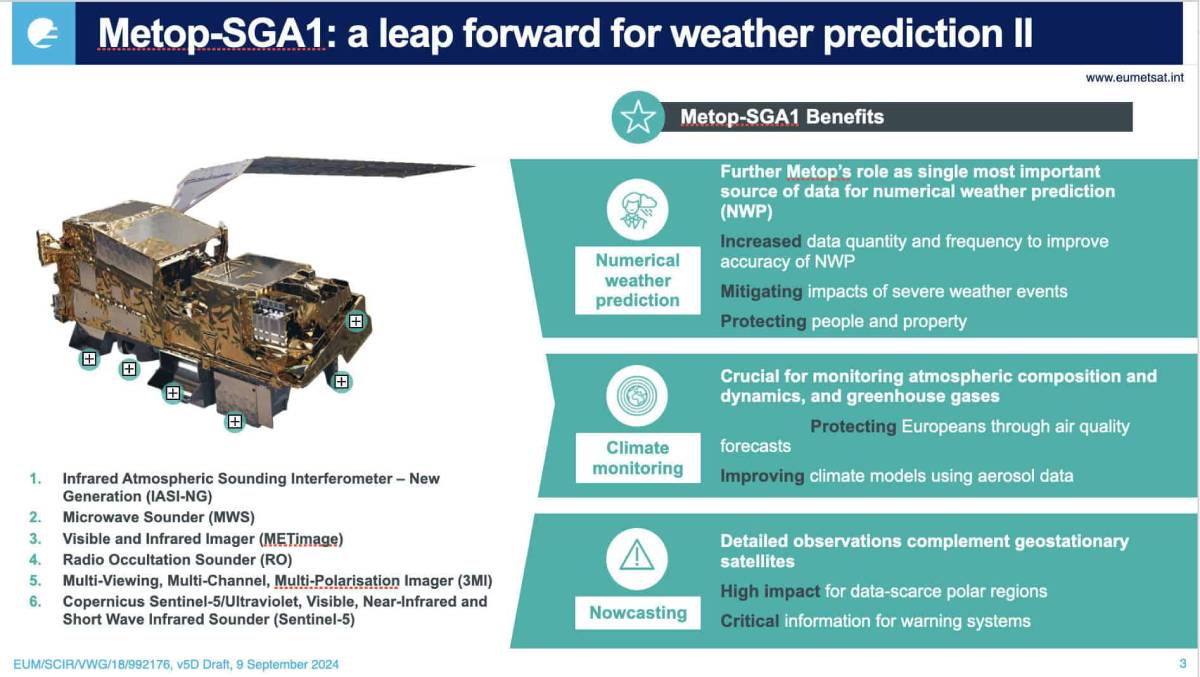 (Source: Eumetsat)
(Source: Eumetsat)
SALT LAKE CITY, UT — Europe’s 30-nation Eumetsat meteorological satellite organization on Aug. 18 said it had taken over operations of the Metop-SGA1 polar-orbiting satellite after three days of in-orbit checkout, preparing a one-year commissioning phase and 20-plus years of operations for three pairs of Metop-Second Generation (SG) satellites.
Metop-SGA1 was launched Aug. 12 aboard the third mission, and the second commercial flight, of Europe’s new Ariane 6 rocket.
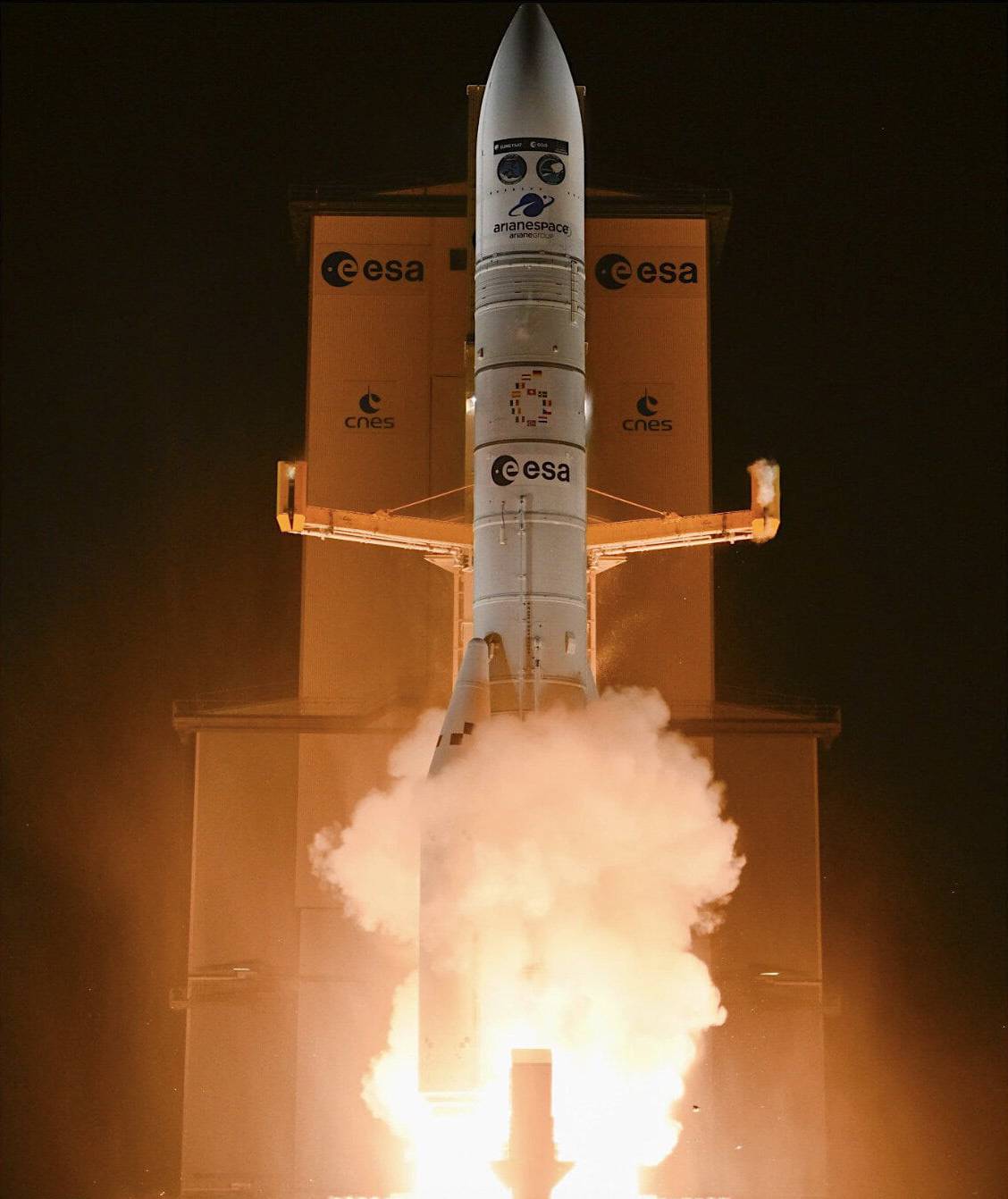 Ariane 6 Aug. 12, 2025, liftoff. (Source: ESA S. Corveja)
Ariane 6 Aug. 12, 2025, liftoff. (Source: ESA S. Corveja)
Metop-SG, one of Europe’s largest satellite programs, marks the beginning of the US-Europe Joint Polar Satellite System (JPSS) agreed to a decade ago.
NASA and NOAA contribute to maintaining a polar meteorological satellite constellation in place alongside Metop-SG, funded by Eumetsat with the 23-nation European Space Agency (ESA); the French space agency, CNES; and the German Space Agency, DLR.
The debut of Metop-SG comes after a debate in the Trump administration about the utility of certain meteorological sensors in the face of budget pressure.
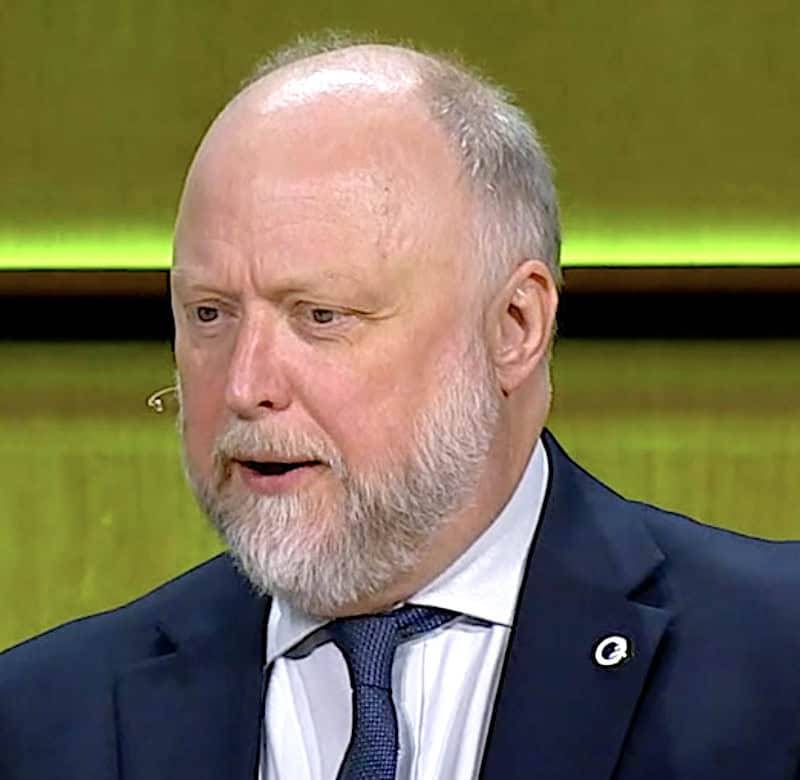 Phil Evans. (Source: ESA video)
Phil Evans. (Source: ESA video)
Eumetsat Director-General Phil Evans said that after a period of uncertainty, he has been assured by NOAA about the stability of the JPSS collaboration.
“We had a high-level bilateral meetings with NOAA NESDIS and we have had further meetings at a very high level. Things are pretty secure I would say,” Evans said in a Metop-SGA1 briefing July 28.
It’s a long-standing partnership that is mutually beneficial. The US and Europe both gain a lot, so I am fairly confident about how things will progress. That is certainly the signal we have gotten from the US.”
The JPSS agreement includes use of each other’s ground stations in the Arctic and Antarctic and a mutual backup in the event of a problem on the spacecraft.
Metop-SG’s total cost is difficult to assess because it has many contributors.
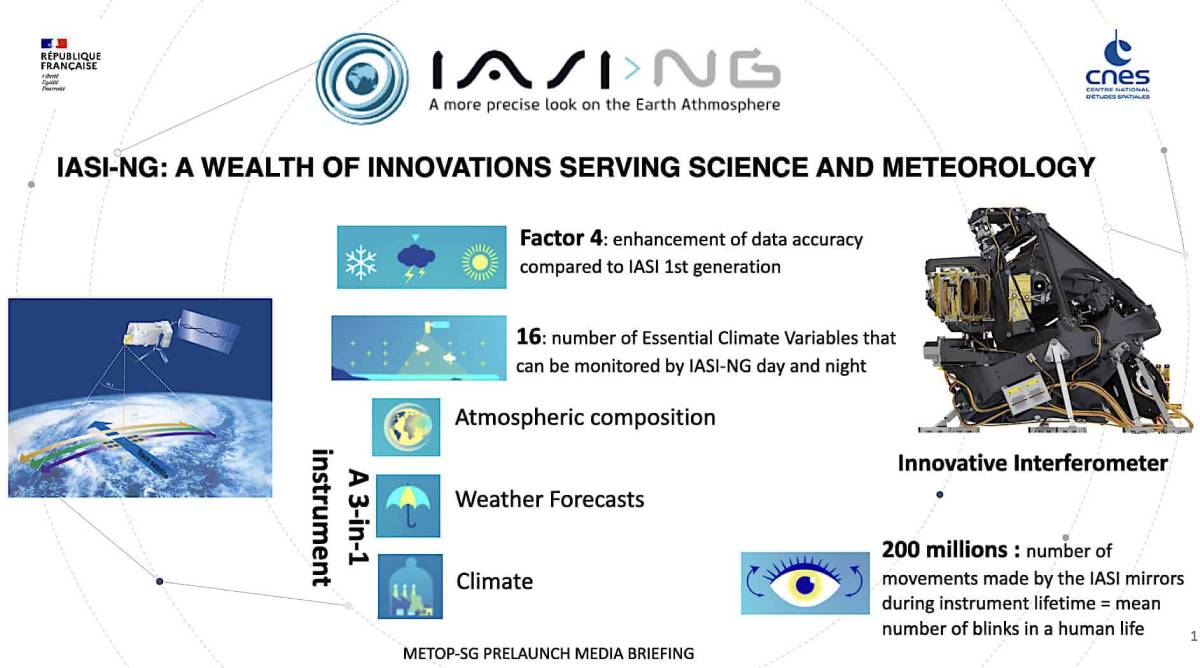 (Source: CNES)
(Source: CNES)
ESA and Eumetsat each have a share of Metop-SG’s development. National space agencies, led by CNES and DLR, share with Eumetsat financing of instruments they provide — IASI NG for CNES, MetImage for DLR. It also does not include the cost of the Sentinel-5 payload aboard Metop-SGA1, financed by the European Commission as part of the Copernicus Earth observation network.
Sentinel-5 will be the 11th Copernicus satellite in orbit. The others are free-flying spacecraft.
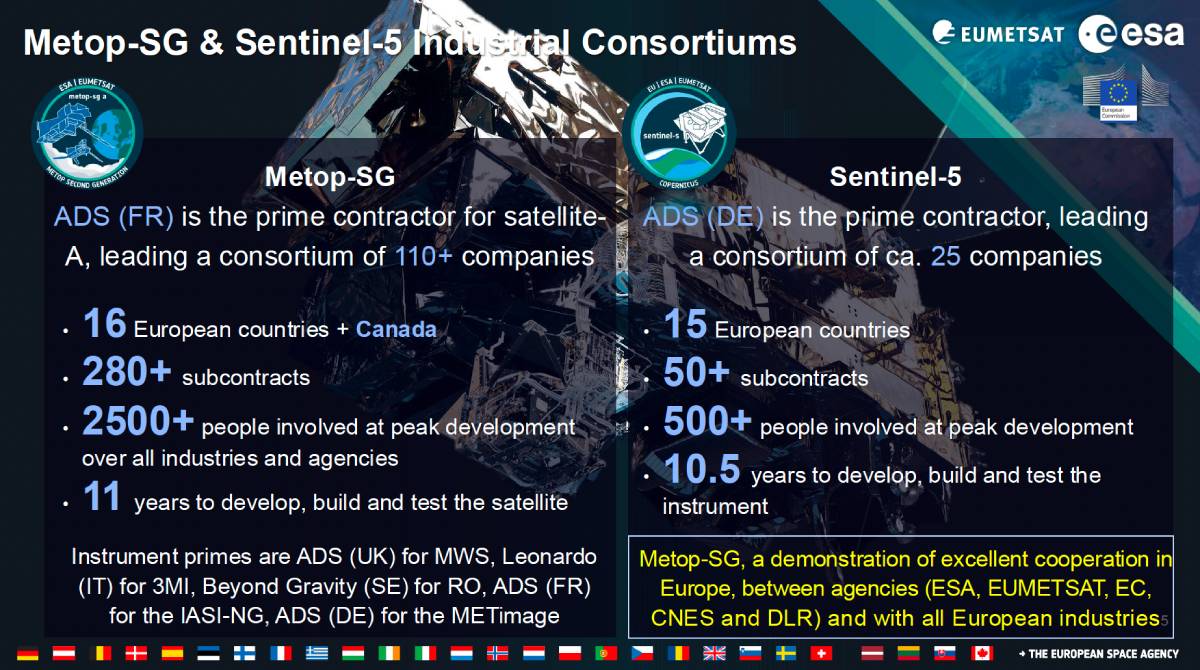 (Source: ESA)
(Source: ESA)
Evans estimated total Metop-SG program cost at 5.2 billion euros ($6.1 billion) in 2025 economic conditions, including 20-plus years of life for the six Metop-SG satellites, each of which has an expected life of 7.5 years. The figure does not include some 200 million euros as CNES’s 50% share of the cost of the IASI NG instrument.
Metop satellites operate from 830-kilometer orbits. In keeping with ESA’s zero-debris policy, the satellites will reserve two-thirds of their on-board fuel for a controlled reentry into the Earth’s atmosphere on their retirement.
ESA Earth Observation Director Simonetta Cheli said the six Metop-SG satellites cost 2.8 billion euros in 2025 economic conditions. Eumetsat paid 30% of this for the Metop-SGA1 and B1 satellites, and 100% of the cost of the recurrent-model pairs.
The six Metop-SG satellites were budgeted at 1.4 billion euros in 2014 when the contract was signed with Airbus Defence and Space. The contract did not include ESA’s internal costs.
Lots of things occurred since then, including inflation, delays caused by the Covid pandemic and the switch to Ariane 6 from the Europeanized version of Russia’s Soyuz rocket, then operated from Europe’s Guiana Space Center spaceport. That plan ended with Russia’s February 2022 invasion of Ukraine.
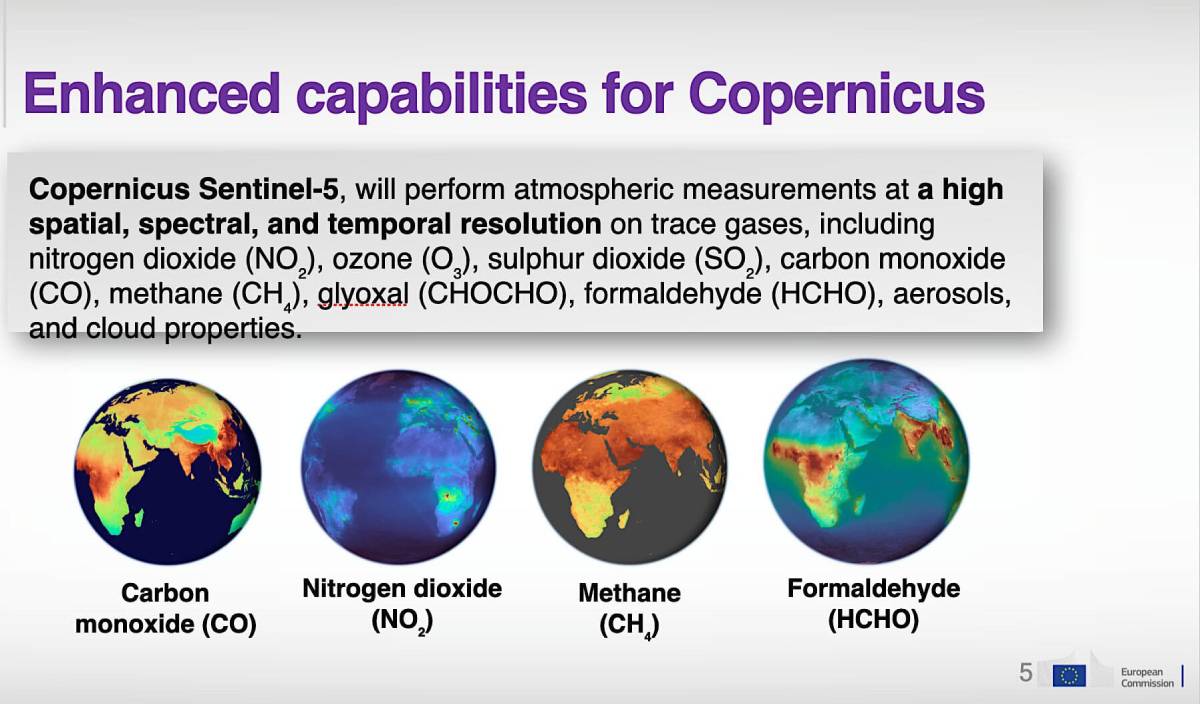 (Source: European Commission)
(Source: European Commission)
Catharina Bamps, Copernicus policy officer at the Commission, said Sentinel-5 cost some 234 million euros.
Eumetsat, ESA and the UK Met Office have conducted separate surveys estimating the value of meteorological satellites in anticipating storms. All have concluded that it saves 19 or 20 times as much as it costs.
Evens said the first-generation Metop was the largest single contributor to the reduction of weather-forecast errors.
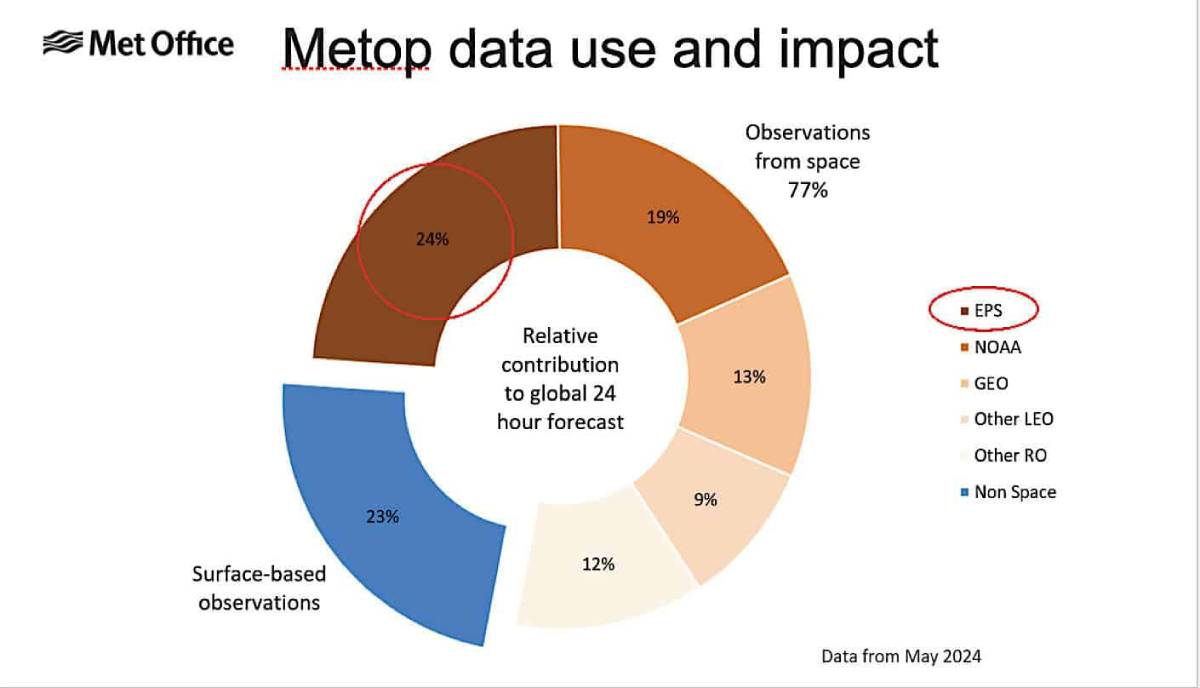 (Source: UK Met Office)
(Source: UK Met Office)
Simon Brown of the UK MetOffice said 24% of UK Met’s forecast accuracy is derived from European polar satellite data, not including the value of the geostationary-orbit satellites. Also to add to the forecast accuracy is a 19% contribution from NOAA satellites, according to UK Met Office.
“This is all about continuity,” Brown said. “This is critical. This investment takes us out to 2040. Knowing we will have this data means we can continue to improve weather forecasting, which has been improving by one day per decade.”
Mark Loiselet, ESA Metop-SG project manager, said the first-generation Metop satellites had 10 small instruments. Metop-SG will provide better-accuracy data from larger instruments, requiring three pairs of satellites instead of three single-satellite missions.
“So now we have two sates each of 4,000 kilograms,” Loiselet said. “So the mission has doubled and it had to double on two satellites.”
Originally published by Space Intel Report on August 18, 2025. Read the original article here.
